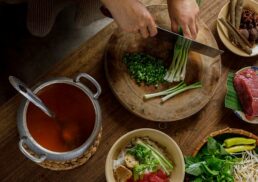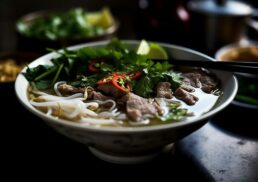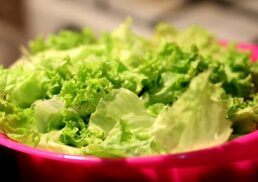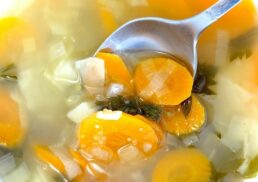Imagine unlocking the secrets of authentic Chinese cooking, elevating your dishes with rich, complex flavors, and impressing your guests with restaurant-quality cuisine. The key? Shaoxing wine, a renowned Chinese cooking wine that adds depth, umami, and balance to a variety of dishes. Get ready to delve into the world of this culinary gem and transform your home cooking!
Table of Contents
Key Takeaways
Shaoxing wine is an essential part of Chinese cooking, with a rich history dating back to 475 BCE.
It enhances dishes by adding umami and balancing flavors, making them restaurant-worthy creations.
Shaoxing wine pairs nicely with traditional dishes as well as innovative recipes and can be used in marinades, braises, soups & sauces.
The Origins of Shaoxing Wine

Shaoxing wine, a celebrated Chinese cooking wine, originates from the city of Shaoxing in Zhejiang province, known for its rich culinary history and seafood-based cuisine. The history of this amber-colored rice wine dates back to around 475 BCE, making it an important part of Chinese food and culture today. During the Qing Dynasty, it was almost unheard of to have a gathering or feast without Shaoxing wine – a testament to its lasting influence in Chinese cuisine.
The unique flavor of Shaoxing wine, also known as Chinese rice wine, is derived from Shaoxing rice, which is fermented to create a wine that varies in color from deep red to golden brown. This versatile rice cooking wine enhances the taste of almost every savory dish, making it a staple in Chinese kitchens and an essential ingredient in countless Asian dishes.
The Making Process: From Rice to Wine
The process to produce Shaoxing wine requires fermentation. Here are the steps involved:
Steamed glutinous rice is mixed with wheat.
The mixture is inoculated with a particular mold, which gives the wine its distinct flavor.
The fermentation process takes place, resulting in the unique and complex flavor profile of Shaoxing wine.
It is important to note that Shaoxing wine is not gluten-free due to the presence of wheat in the fermentation process.
With an alcohol content typically ranging from 15 to 20%, Shaoxing wine finds its use in a variety of dishes, including:
sauces
marinades
dumpling fillings
stir-fries
While not commonly consumed as a beverage like Japanese sake, it is an indispensable addition to a myriad of Chinese dishes, adding depth and complexity to each culinary creation.
Flavor Profile and Culinary Uses
Shaoxing wine is prized for its ability to:
Add umami
Balance flavors
Elevate popular Chinese recipes such as stir-fries, braises, and soups
Enhance sauces, broths, and other dishes
Its slightly sweet, nutty taste makes it a secret ingredient that imparts a restaurant-quality flavor to your cooking, and it can be found in most grocery stores.
The subsequent subsections will detail the role of Shaoxing wine in various culinary applications.
Enhancing Umami in Dishes
Shaoxing wine’s unique flavor profile is a result of its fermentation process, which increases the glutamate content – one of the key compounds for the umami taste. This umami-rich flavor is due to the presence of amino acids, particularly glutamic acid and aspartic acid, in the wine. The longer the fermentation time, the higher the glutamate content, and the more umami flavor Shaoxing wine will have.
This celebrated yellow wine, often used as a cooking wine, adds depth and richness to dishes, giving them that extra something that makes them taste like they came from a restaurant. Its strong, intense flavor, both vinegar-y and caramel-like, pairs wonderfully with a variety of ingredients, enhancing the overall umami taste and transforming your culinary creations into unforgettable experiences with the help of cooking wines.
Balancing Flavors
Shaoxing wine is not only a flavor enhancer but also a master of balancing flavors in dishes. The esters, acids, and aging process of the wine contribute to its flavor-balancing properties. Esters provide fruity and candy-like flavors, while acids improve mouthfeel and tone down sweetness and bitterness. The aging process further refines the wine’s ability to balance flavors in dishes.
From marinades for meats to braised dishes, soups, and sauces, Shaoxing wine’s unique flavor profile and balancing properties complement the ingredients and elevate the final dish to new heights. Its ability to tenderize meat and remove any fishy or gamey taste makes it a versatile and indispensable addition to any kitchen.
Popular Recipes Featuring Shaoxing Wine
Many popular Chinese recipes feature Shaoxing wine as a key ingredient, showcasing its versatility and appeal in both traditional and modern cuisine. Some delicious recipes that incorporate Shaoxing wine include drunken chicken, red braised pork belly, and a myriad of stir-fry dishes. The wine’s unique flavor profile and rich taste make it a sought-after ingredient in Chinese cooking.
Experimenting with Shaoxing wine in different recipes allows you to unlock its full potential and enhance the flavors of your dishes. Whether you’re new to Chinese cooking or a seasoned chef, incorporating Shaoxing wine into your culinary repertoire will open up a world of possibilities and elevate your home cooking to restaurant quality.
Health Benefits and Dietary Considerations
Although Shaoxing wine is not gluten-free due to the inclusion of wheat in its fermentation process, it does provide some notable health benefits. It is believed to have many health benefits, such as:
Improved digestion
Increased energy
Better cardiovascular health
A great source of B vitamins, like B1, B2, niacin, and vitamin E, which can have a positive effect on the skin and slow down the aging process
Boosted immunity and metabolism
Acting as a probiotic for stomach health
Improved blood circulation and body metabolism
Of course, it’s important to consume Shaoxing wine in moderation and consider any dietary restrictions before incorporating it into your cooking. Those with gluten intolerance, for example, should seek gluten-free alternatives to Shaoxing wine to avoid any adverse reactions.
Navigating the World of Shaoxing Wine Brands
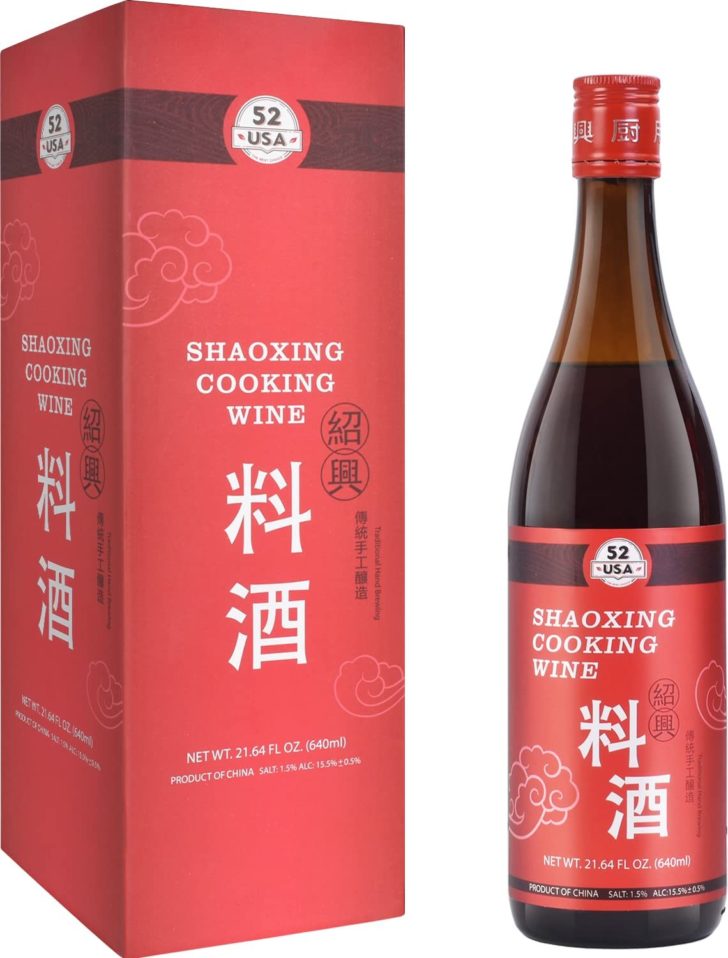
Choosing the right Shaoxing wine brand for your culinary needs from a multitude of options in the market can pose a challenge. Some of the top Shaoxing wine brands include:
Guyue Longshan
Pagoda Brand
Luzhou Laojiao
Kui Hua Chen Chiew
Yuanhong Wine
Huadiao Wine
Shanniang Wine
Xiangxue Wine
While there may not be a significant difference in taste between the various brands, it’s worth experimenting with different options to find your perfect match.
Price can be an indicator of quality when it comes to Shaoxing wine – higher-priced options often offer better taste and enhance the flavors of the dishes they’re used in. The author’s go-to high quality Shaoxing wine is Double Phoenix, which is both affordable and of high quality.
Storing and Preserving Your Shaoxing Wine
Proper storage is necessary to maintain the quality of your Shaoxing wine. The best place to store Shaoxing wine is in a cool, dark spot with a sealed container. This will ensure that the wine remains fresh and maintains its unique flavor profile. There’s no need to refrigerate Shaoxing wine – it can last for years without refrigeration when stored correctly.
If you have multiple bottles of Shaoxing wine, consider reserving one for regular cooking and another for special occasions. This will allow you to enjoy the nuances of different Shaoxing wines and make the most of their unique flavors in your dishes.
Substitutes and Alternatives for Shaoxing Wine
When Shaoxing wine is not available, suitable substitutes can be utilized. Dry sherry, mirin, and Japanese rice wine (sake) are all great alternatives for Shaoxing wine in recipes. While they may not perfectly replicate the flavor profile of Shaoxing wine, they can still provide a similar umami taste that enhances your dishes.
For those who cannot consume alcohol or need a gluten-free option, chicken broth or non-alcoholic beer can be used as a substitute, though these alternatives may alter the dish’s flavor slightly. It’s always worth experimenting with different substitutes to find the one that best suits your taste preferences and dietary requirements.
Pairing Shaoxing Wine with Food and Drink
Pairing Shaoxing wine with various food and drink options can enhance the overall dining experience and complement the flavors of the dishes. Traditional food pairings for Shaoxing wine include:
Drunken chicken
Braised beef
Braised fish
Chicken wonton soup
Dishes with soy sauce
The wine’s unique flavor profile also pairs nicely with salty and sour foods, making it a versatile addition to any meal.
Aside from traditional pairings, Shaoxing wine can also be incorporated into innovative recipes and fusion dishes, showcasing its versatility and timeless appeal. Whether enjoyed as a cooking wine or a beverage, Shaoxing wine has the ability to elevate any dining experience with its rich, complex flavors.
Shaoxing Wine in Modern Cuisine
Shaoxing wine continues to find its place in modern cuisine, being incorporated into innovative recipes and fusion dishes, demonstrating its versatility and timeless appeal. Its slightly sweet, nutty taste enhances a variety of dishes, including:
Marinades
Braises
Soups
Sauces
This makes it an essential ingredient in contemporary Chinese cooking, often found at your local Chinese grocery store, alongside a variety of Chinese sauces.
Creative recipes that use Shaoxing wine include:
Drunken Chicken
Instant Pot Braised Beef
Chinese Braised Fish
Chicken Wonton Soup
Asparagus Shrimp Stir Fry
Steamed Stuffed Bitter Melon
Experimenting with Shaoxing wine in modern dishes allows you to discover its full potential and enhance the flavors of your culinary creations. When you drink Shaoxing wine, you’ll notice how it complements the ingredients and elevates the overall taste.
Summary
Shaoxing wine is a culinary treasure that can transform your home cooking and elevate your dishes to restaurant-quality levels. Its unique flavor profile, ability to enhance umami, and talent for balancing flavors make it an indispensable addition to any kitchen. Explore the world of Shaoxing wine, experiment with different brands and recipes, and discover the endless possibilities of this versatile cooking wine. Happy cooking!
Frequently Asked Questions
What is equivalent to Shaoxing wine?
The best substitute for Shaoxing wine is dry sherry or mirin. Dry sherry has a sweet and nutty flavor, while mirin is sweeter and has a lower alcohol content – if using this substitute, it is recommended to reduce the sugar called for in the recipe.
Is rice wine and Shaoxing wine the same?
Rice wine and Shaoxing wine are essentially the same, as they are both made from fermented rice. The only difference is that wheat is added to Shaoxing wine before fermentation, resulting in a wine that has a touch of acidic, salty flavor and a fragrant smell.
What dishes are traditionally made with Shaoxing wine?
Shaoxing wine is often used to make dishes like drunken chicken, red braised pork belly and stir-fry dishes.
Can Shaoxing wine be consumed as a drink?
Yes, Shaoxing wine can be consumed as a drink, and can even be a great accompaniment to certain dishes.
Is Shaoxing wine gluten-free?
No, Shaoxing wine is not gluten-free since it contains wheat in its fermentation process.
